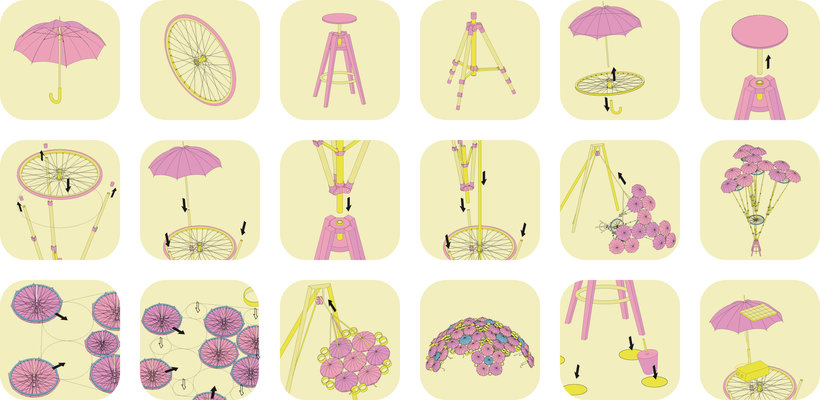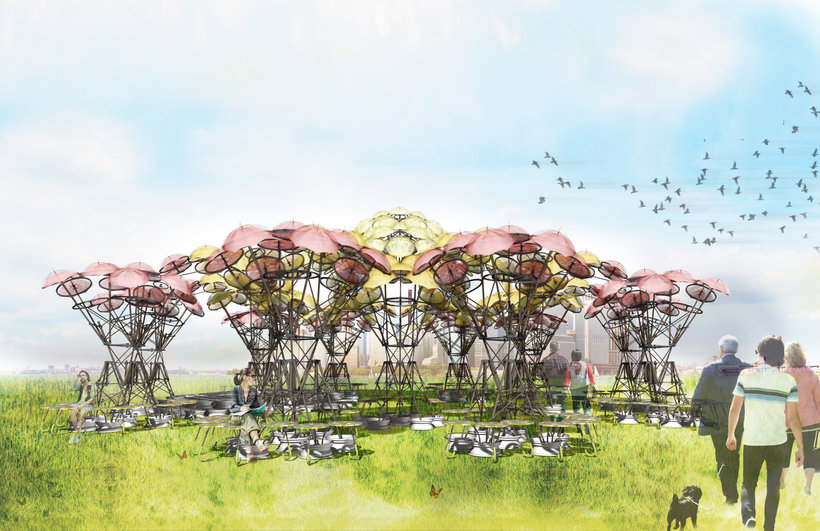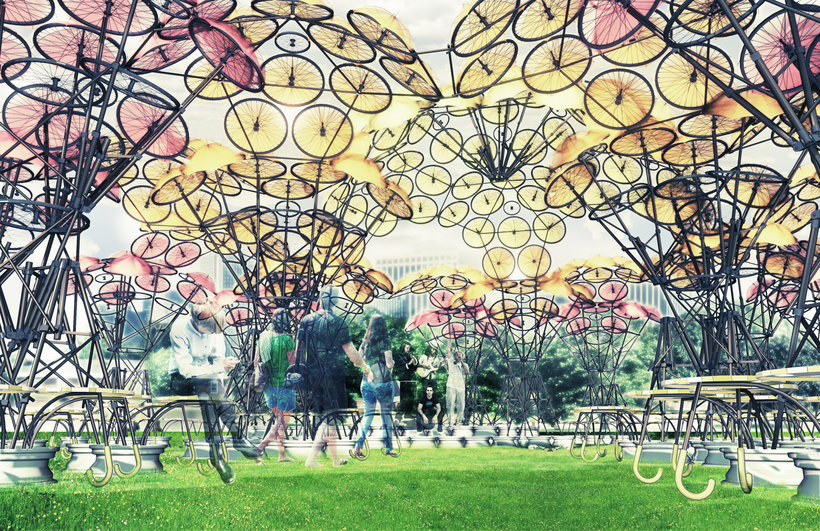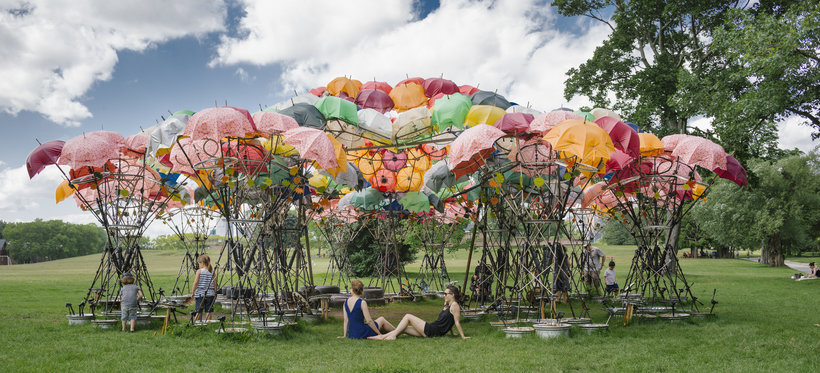Eco-Friendly Pop-up Architecture
Course final project
A course by Izaskun Chinchilla Moreno , Architect
About the final project for: Eco-Friendly Pop-up Architecture
Eco-Friendly Pop-up Architecture
“We have now reached the end of this course. Thank you so much for accompanying me for the time being! Before you leave now, let me offer you some more information on what your final project ideally should look like. This way, you should be able to put everything you've learned into practice by going through all the steps we've taken in this course. As a final project, I would like you to start designing your own piece of pop-up architecture made out of repurposed materials and objects. I encourage you to start designing a pavilion with recycled or hacked products. First, get familiar with circular economy and "cradle to cradle" principles, two environmental paradigms that can provide you with a background to understand and explain to others the benefits of designing with repurposed objects. Another important factor is to learn to distinguish between recycling, hacking, reusing, and upcycling. This way, you will find new ways to bring a second life to what is around you! Then it's time to settle on a systematic collection and classification of leftover objects and used materials to build your own design. Evaluating and comparing the benefits of using these objects and materials should not come up short in this. In the next step, you will create an attractive and engaging visual result for your project. Think carefully about how the image you choose creates the audience of your work. Then, think about structural stability. Don’t forget that reusing found objects as primary building materials can cause problems when it comes to structural analysis, so it's recommendable to use our “modes of failure" approach to materiality and apply redundancy to the global scheme and the local joints.




Partial transcription of the video
“Final Project Hello. First of all, thank you very much for taking this journey with me. I have tried to share all the knowledge that I have acquired all through my professional experience. Now it's the time to apply everything you've learned into your own pop-up design. We started getting familiar with circular economy and cradle to cradle principles. These are two environmental paradigms that can provide you a background to help you understand and explain to others the benefits of designing with repurposed objects. After that you learned to distinguish between recycling, reusing, upcycling...”
This transcript is automatically generated, so it may contain mistakes.
Course summary for: Eco-Friendly Pop-up Architecture
-
Category
Architecture & Spaces -
Areas
Architecture, Spatial Design, Upcycling

Izaskun Chinchilla Moreno
A course by Izaskun Chinchilla Moreno
Izaskun Chinchilla studied architecture at the Polytechnic University of Madrid. After graduating with an honors degree and an award for best academic record of her class, she went on to start her own architecture studio, Izaskun Chinchilla Architects in Madrid. Her work applies environmental protocols in a contemporary architectural context.
Izaskun has worked with clients in the public sector like the Spanish Ministry of Public Work and the Madrid Council, as well as companies such as IKEA, G’vine, Sunbrella, and El Corte Inglés. She is the recipient of numerous awards throughout Europe and the United States. Some of her most notable designs include Organic Growth Pavilion in New York City, “Cosmowomen. Places as constellations” in Rome, and the VIP Room for ARCO in Madrid. She has also taught architecture in different universities like the Madrid School of Architecture, Institute of Advanced Architecture of Catalonia, and the Geneva University of Art and Design.
- 100% positive reviews (49)
- 3,039 students
- 17 lessons (3h 55m)
- 37 additional resources (21 files)
- Online and at your own pace
- Available on the app
- Audio: English
- English · Spanish · Portuguese · German · French · Italian · Polish · Dutch
- Level: Beginner
- Unlimited access forever

